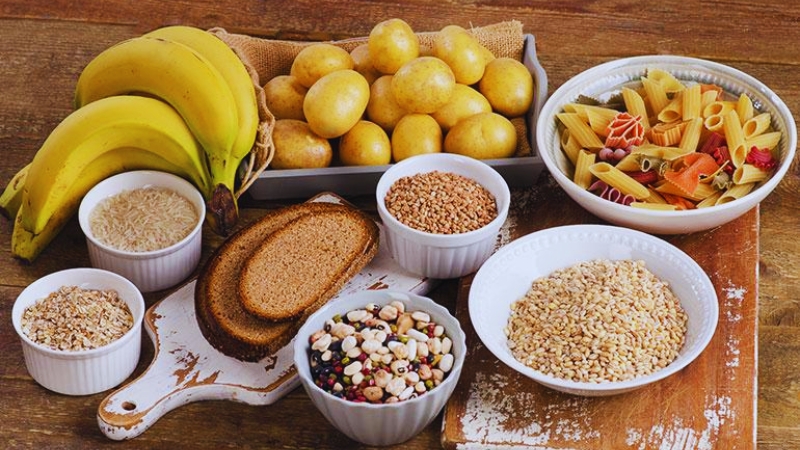In the world of nutrition trends, white foods have gained an undeserved bad reputation. From white rice to potatoes and even cauliflower, many of these naturally pale-colored foods are automatically labeled as “bad” or “unhealthy.” This belief often stems from the association of colorless foods with processed carbs, added sugars, and low nutritional value. But that’s a simplified—and often misleading—way to look at what we eat.
It’s time to rethink the narrative around white foods. The truth is, many of them offer essential nutrients, fiber, and health-supporting properties. Blanket-cutting all white foods from your diet may mean you’re missing out on valuable nutrition.
1. The Real Issue: Refined vs. Whole
Much of the confusion around white foods comes from lumping together two very different categories: refined, processed products and whole, naturally white foods. White bread, pastries, and sugary cereals do tend to be highly processed and stripped of nutrients. These foods are often made from refined flour and contain added sugars, making them less ideal for everyday consumption.
However, not all white foods fall into that category. Potatoes, onions, garlic, mushrooms, parsnips, cauliflower, and even white beans are nutrient-dense and can play a beneficial role in a balanced diet. The key is to distinguish between foods that are refined and those that are whole and unprocessed.
2. Potatoes: A Nutritional Powerhouse in Disguise
Potatoes often top the list of foods people cut out when trying to eat “clean.” But the humble potato is far from a nutritional villain. It’s packed with vitamin C, potassium, and B vitamins, and when eaten with the skin, it provides a decent amount of fiber. Potatoes also contain resistant starch, especially when cooled after cooking, which can improve gut health and help with blood sugar control.
The issue with potatoes typically lies in preparation. Deep-frying them into chips or loading them with cheese and sour cream overshadows their benefits. But when baked, boiled, or roasted with minimal oil and seasoning, potatoes can be a satisfying, nutrient-rich addition to meals.
3. Cauliflower and Its Crucial Compounds
Cauliflower has gained popularity in recent years, largely thanks to the rise of low-carb and gluten-free diets. But even before it was mashed into pizza crusts or turned into rice, cauliflower stood out for its impressive nutritional profile. It’s high in fiber and rich in vitamins C and K. Cauliflower also contains glucosinolates—sulfur-containing compounds that may support liver detoxification and offer cancer-protective properties.
Despite being white, cauliflower belongs to the cruciferous vegetable family, alongside kale and broccoli. These vegetables are known for their anti-inflammatory and antioxidant benefits. So rather than excluding cauliflower based on color, it deserves a regular spot on your plate.
4. White Beans: Unsung Heroes of Plant-Based Protein
White beans, such as cannellini or navy beans, are often overlooked in favor of their more colorful counterparts. However, they offer plant-based protein, complex carbohydrates, and a wealth of minerals like magnesium and iron. They’re also excellent sources of soluble fiber, which can help manage cholesterol levels and support heart health.
In addition to their nutrient profile, white beans are versatile and filling. They work well in soups, stews, salads, and even dips. Including them in your diet can boost satiety and stabilize blood sugar levels without the need for meat or processed ingredients.
5. Garlic and Onions: More Than Flavor Boosters
Garlic and onions are staple ingredients in cuisines around the world, prized not only for their flavor but also for their medicinal properties. Garlic contains allicin, a compound with antimicrobial and potential heart-protective effects. Onions offer quercetin, a flavonoid that acts as an antioxidant and may help lower inflammation.
Both garlic and onions also support gut health by feeding beneficial gut bacteria, thanks to their prebiotic fiber. While they’re rarely eaten in large quantities on their own, their regular use in cooking adds more than just taste—it contributes to long-term health in meaningful ways.
6. White Rice: Not Always the Enemy
White rice is frequently demonized due to its lower fiber content compared to brown rice. While it’s true that white rice is more processed, it’s not inherently harmful. In many cultures, it remains a dietary staple and is often paired with nutrient-dense foods like vegetables, legumes, and lean proteins.
White rice is also easier to digest for people with sensitive stomachs or digestive disorders, making it a practical choice in many cases. When portioned mindfully and combined with fiber-rich foods, it can fit into a healthy diet without spiking blood sugar as severely as feared.
Don’t Judge Food By Its Color
Food color alone doesn’t determine its nutritional value. While vibrant colors often indicate the presence of certain phytonutrients, white or pale foods can also contain powerful compounds that support overall health. What truly matters is the context in which you’re eating them—how they’re prepared, what they’re paired with, and how they fit into your overall diet.
Focusing too narrowly on food color can lead to unnecessary restriction and food guilt. A more sustainable and nourishing approach is to build meals that include a wide variety of foods—regardless of their color—while paying attention to whole ingredients and moderation.
Final Thoughts
White foods don’t deserve the blanket label of being unhealthy. While some highly processed white items are best limited, many naturally pale foods are packed with essential nutrients and health benefits. The next time you reach for a potato, a scoop of white rice, or a head of cauliflower, remember that color isn’t the enemy—misinformation is. Rather than cutting them out entirely, embrace these foods for what they offer and incorporate them wisely into your diet.











